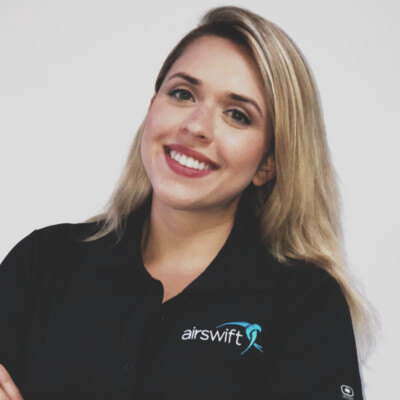
By
Manuela Araujo
August 14, 2024
Updated
September 4, 2024
In the highly competitive world of job hunting, crafting a standout resume is your first and perhaps most crucial step to securing that dream position.
A resume is more than just a collection of your skills, experience, and education. It's a marketing tool, a personal billboard that advertises you to prospective employers.
The task of writing an impactful resume can often feel daunting. However, with the right approach and understanding of what makes a resume effective, it's a task that's well within everyone's grasp.
Your resume is an essential tool for landing job interviews. It’s important to make sure it sets you apart from all the other CVs the hiring manager will be reading.
In our last blog, we provided some expert tips on how to write the perfect resume summary.
This post will take it a step further and with advice on building the rest of your CV to get the interviews you want.
Check out the video below and dive even deeper into this subject:
See below for our top resume writing tips
Step 1: Include your contact details

Ensure your contact details are positioned at the top of your professional resume. This immediate visibility allows employers to recognise you instantly and facilitates easy communication if they decide to invite you for an interview.
Ideally, your full name should stand out, preferably in a font slightly larger than the rest of the text.
In addition to this, make sure to include your email address, phone number, and LinkedIn profile URL, to offer multiple avenues for potential employers to reach out to you.
Step 2: Keep it short, but accurate
In the endeavour of crafting a CV, it's often tempting to delve into exhaustive detail to underscore why you're the ideal candidate for the role.
However, in this context, brevity often prevails.
Hiring managers generally contend with a substantial volume of CVs, merely skimming through the information on your CV to ascertain if you're a suitable candidate.
If the content on the page is verbose and challenging to digest, you run the risk of losing their attention.
As a guideline, you should distinctly:
- Emphasise the span of your experience
- Highlight the primary industries you've engaged with
- Feature any achievements pertinent to the job role for which you're applying
Step 3 - Include educational accomplishments
Incorporating your educational background is a vital element in your resume, particularly when the role at hand stipulates specific qualifications or certifications, like a degree in a particular discipline.
Remember to mention the name of the institution from which you acquired your qualification.
Additionally, do highlight any honors or accolades you received upon graduation.
This valuable information showcases your academic achievements, enhancing the comprehensive portrayal of your candidacy.
Step 4 - List your skills

Hiring managers typically look out for skills that correspond directly with the job description.
You should utilise pertinent keywords to depict these. Incorporate any relevant skills you've honed throughout your career, and any software you've utilised or have familiarity with.
Convey these in concise paragraphs or bullet points for maximum clarity.
Aim to emphasise predominantly on hard skills, such as an in-depth understanding of engineering principles, for instance.
Deploying action verbs such as 'problem-solving' can aid in distinguishing your application.
Furthermore, showcasing your soft skills on your resume can provide a well-rounded picture of your professional capabilities. Highlighting qualities such as effective communication, problem-solving, adaptability, and teamwork can set you apart from other candidates. For instance, illustrating your leadership abilities through past experiences where you successfully led a team or project can demonstrate your potential for future success in a managerial role.
Step 5 - Work experience
Regarding your work history, the primary focus of hiring managers rests on the duties you've undertaken in each of your professional roles.
Prospective employers are keen to understand your tasks and how this experience aligns with their requirements, thus demonstrating your suitability for the role.
A handy tip is to outline between one to six major responsibilities per role, giving a comprehensive snapshot of your professional capacity.
Just as in the skills section of your resume, it's beneficial to incorporate keywords from the job description, enabling SEO-friendly matching and enhancing your candidacy appeal.
Step 6 - Projects and accomplishments
In this section, incorporate any information you deem crucial for the hiring manager to understand about you.
For instance, the development of a novel system or procedure or the identification and resolution of a work-related challenge.
Quantifying your achievements is a highly efficacious method of distinguishing yourself from other applicants.
- Did implementing a new initiative under your leadership save your project or employer time? If so, how much time was saved?
- Did you pioneer a project that influenced the financial status of your business?
- What was the monetary impact? How much revenue did it generate, or how much in costs did it reduce? These tangible metrics offer concrete evidence of your capabilities and contributions.
For example
Implemented Lean Six Sigma to reduce variation in our widget manufacturing. By minimising errors to near zero, our production times halved and created a cost saving of $1m over 12 months
Step 7 - Keep the style clean and simple
Avoid the temptation of overusing multiple colors and a variety of font styles. It's advisable to adhere to professional fonts like Arial or Times New Roman, maintaining a size of 11 or 12 for optimal readability.
For emphasising certain details, resort to bold text instead of changing color, as it ensures an elegant and distraction-free presentation.
Lastly, always save your resume in a universally accessible format such as PDF or Word document.
This guarantees ease of access for hiring managers and ensures seamless readability across various devices.
Conclusion
This resume template approach will set you up for the best interview chance.
Remember to keep your sentences short and to the point, and use relevant keywords that link back to the job description.
We hope these tips have been helpful. Good luck with your job search!
For more tips on finding a job, check out our jobseekers' guide.
Are you now a confident resume writer? Let Airswift help you find your next role
If you’re ready to find your next job, Airswift would love to help. Explore our jobs board for the most recent vacancies across the globe. Your next opportunity might just be a click away.
FAQs
- How can I make my resume stand out to recruiters?
Tailor your resume for each job, using keywords from the job description and showcasing quantifiable achievements.
- Which resume format is most effective?
Chronological is preferred, but functional or combination formats can benefit career changes or gaps.
- How long should my resume be?
Aim for one page, but professionals with extensive experience could extend to two pages.
- Can I include volunteer work or internships?
Yes, especially if they're relevant to the job you're applying for, to provide a full picture of your skills.
- Should personal projects or hobbies be on my resume?
Include them if they demonstrate skills relevant to the job or highlight personal achievements.
- Do I need to customise my resume for each application?
Definitely, tailoring your resume to each job listing can significantly increase your chances of getting noticed.

